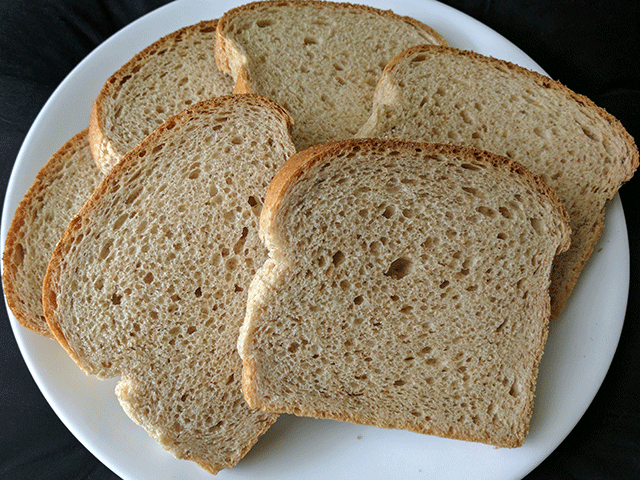
I’ve tried a lot of bread recipes over the years, and all my loaves have varying results. Often I end up burning my bread or overbaking it until the crust is hard enough to chip a tooth.
For the longest time, I couldn’t help but wonder what secret techniques bakeries used to create loaves with a soft crust. Did they whip the bread dough into submission? Did they add a special ingredient that kept the crust from hardening? Perhaps they worship some unknown bread god or sacrifice flour, sugar, and yeast to the Pillsbury dough boy?
Turns out those secrets to a softer crust aren’t as crazy or difficult as I initially thought. These simple methods will ensure each loaf bakes with a perfectly soft crust, every time.
1. Bake at Lower Temperatures
Many artisan bread recipes will have you cook your bread at a higher temperature to crisp the crust. Often times, they’ll follow up with a lower temperature to ensure an even bake. My peasant bread recipe, for example, will have you cook your bread at 425 degrees Fahrenheit for 10 minutes and then at 375 for another 15 to 20 minutes. This technique gives the bread a flaky, slightly crisp crust.
But if you want a melt-in-your-mouth soft crust, you need a much lower temperature for a longer period. For sandwich bread and similar recipes, you’ll likely want a temperature between 325 and 350 degrees Fahrenheit, and to ensure an even bake, you’ll need to set aside anywhere from 45 minutes to an hour of oven time.
Note that it’s tough adjusting temperatures if you don’t have a lot of experience baking bread. If you’re not careful, you could over bake or under bake your loaf. Bakers just starting out might want to try one of the other secrets to a softer crust.
2. Brush With Butter
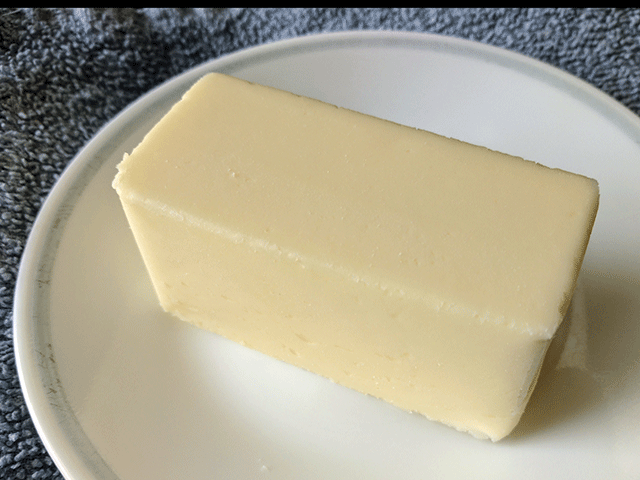
Few things feel more satisfying than slathering butter over a slice of fresh bread. But even though I love putting butter on after I’ve baked my bread, I often forget that you can put butter on before it goes in the oven.
As a repeat example, my peasant bread recipe requires that you brush the loaf with butter before you cook it. Butter contains fats that retain gases during baking, ensuring the dough rises properly in the oven and softening the crust.
If you forget to brush the dough before you bake, you can still apply it as soon as you take it out. The butter will minimize the amount of crisping a loaf will do as it cools.
This is one of my favorite secrets to a softer crust, and it’s the most reliable method for me.
3. Sweat It Out
If you want to lose weight, or you simply don’t want to use half a stick of butter with every loaf, don’t sweat it. Or rather, do sweat it.
Bread right out of the oven produces a lot of heat and steam. When the hot air hits the cold air, the water vapor condenses, or “sweats.” If you cover your bread with a towel or bowl, you can trap that water in your bread, resulting in a softer crust.
I’ve turned otherwise rock-hard loaves into soft, tasty treats this way. Of course, I’ve also had otherwise delicious loaves turn into soggy mushy balls of dough using this technique by accident, too. Keep an eye on your bread if you choose to try this secret to a softer crust.
4. Try a Recipe That Incorporates Milk
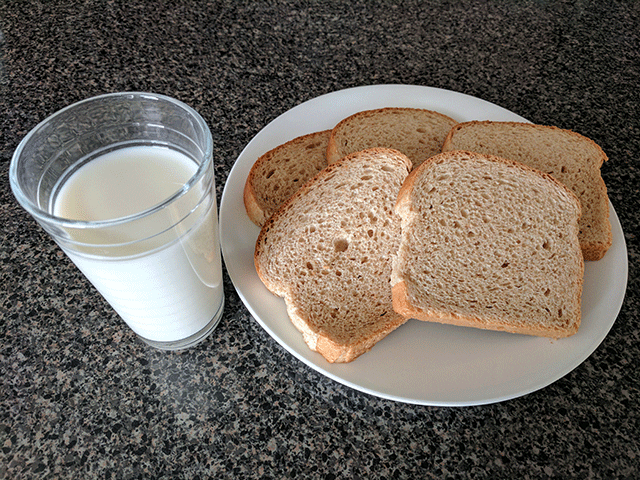
The most basic bread recipes require few ingredients: yeast, flour, sugar, and salt. Additional ingredients affect the texture, flavor, and rise of the bread. Eggs, for example, allow the bread to rise a little higher. Oils add flavor and improve the shelf life of your bread, but they also inhibit gluten formation, so your bread won’t rise as high.
When you add milk to your dough, the lactose (milk sugar) will add a subtle sweetness to your bread, and the milk proteins will increase its nutritional value. Better still, the milk fats help retain carbon dioxide gases during baking, so your loaf comes out softer.
If you want especially soft bread, use milk with a higher fat percentage, and try one of my recipes that use milk as a key ingredient. Take a look at the tags to the right, and click on the #milk.
5. Use a Pain de Mie Pan
You are probably already familiar with the typical bread pan. But have you ever tried a pain de mie, or Pullman loaf, pan?
A pain de mie pan has a sliding lid that keeps the bread covered during baking. It effectively traps in steam that normally evaporates during baking, and the shape allows for more symmetrical loaves, so it works well for sandwich bread.
You can purchase a Pullman loaf pan at a variety of brick-and-mortar stores, such as Walmart, but if you want to buy one online, you can find a Pullman pan on Amazon.com*. Many bakers tout Pullman loaf pans as their secrets to a softer crust, and I can see why.
How Did Your Bread Turn Out?
These secrets to a softer crust have helped me improve the texture of my bread, but I’d love to know how they helped you. Share your experiences in bread making in the comments below. If you have additional tips, please don’t hold back! I’d love to know how to make better bread.
*I am an Amazon associate, so I earn a small commission for purchases on affiliate links. However, my opinions remain my own, so I only share products that I feel comfortable with.

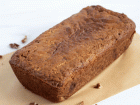
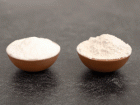
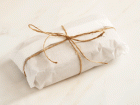
I’m going to try your techniques. I have to make my bread in an 18 qt roaster oven but really can’t find any info on that. I made my recipe and it had good spring and did turn brown but the crust was hard and for white bread I need it softer so will try your ideas. The only issue I had with the roaster oven was that a 30 minute loaf took 1 hour 15 minutes to get to a 190F temp.
I hope they help! I’ve never baked with a roaster oven before, so I’m not sure what the differences are. Let me know how things turn out and what worked for you 🙂
I use a terra cotta chicken roasting pan for bread! My roaster has a shiny coating inside the bottom half and has an unglazed top.
For me, the best way to prevent the slow temp rise is to preheat the oven with the bottom 1/2 of the pan inside. Pull it out of the oven to put your dough in, then add the roasting top & send it back in (don’t forget your oven mitts!).
The reason I mention the unglazed top is that I’m planning to soak the lid before baking my next loaf to see if the trapped steam makes some magic. I will keep you posted!
Thank you so much Betsy! That is a very helpful comment. I appreciate that you took the time to reply 🙂
Hello!
I often make home made buttermilk honey bread with homemade buttermilk.
Will the umm, techinque of baking at lower temp work for this recipe. I usually have to bake at 375 for 30 minutes
I always brush it with butter RIGHT after I finish baking it but crust usually stays a little crisp, and I like soft crusts sometimes.
Or would trapping/sweat work better??
I always get crisper crust than I desire.
Thanks!
Since I don’t have your full recipe, I’m not entirely sure the best technique for getting that softer crust you want. However, 375 is a fairly low temperature already, so taking it down to 350 for 45 minutes to an hour might dry out your bread by the time it’s done baking. My safest bet would be to let your bread sweat for a softer crust. You could also try tenting your bread with aluminum foil halfway through baking. If you do experiment with your baking times, let me know what worked for you.
So ugly made a braided bread for Easter..outside is hard inside soft what the heck
I make mine in a Pullman pan. It calls for a total of forty minutes, on a pizza stone, at 450 degrees. Should I try 350 for an hour to get a softer crust?
A drop from 450 to 350 is quite a bit – It might need more than an hour to fully cook all the way. I suggest trying for an hour to start, and then using a thermometer to check your bread’s temperature and progress every 10 minutes from there. Typically bread needs to reach about 190 to 200 degrees Fahrenheit in the center. Let me know how it works out for you!
Hi JenniBee,
I can’t find the link for your peasant bread anymore. Please share a new recipe if you have.
Ciao!
Oh I’m so sorry that link broke for a bit! I’ve fixed it. But here is my peasant bread recipe and thank you so much for letting me know.
I did everything rite. Except cover it while baking it.
I baked my bread n it was a hard crust. Sad I even used beer instead of yeast. To insure the yeast would be active. An s it was.
Darn. I’m sorry your bread didn’t turn out the way you wanted it. I hope your next loaf is more to your liking.
Hi JenniBee, Thank you for sharing your breadmaking wisdom.
Saw a typo on this page. I think you mean carbon dioxide instead of carbon monoxide.
Oh thank you so much for the correction! I am just one little baker sharing my thoughts and have no editor to catch such things. I appreciate all the help I can get from kind people like you.
I baked bread this morning that is delicious but the crust was hard, so found your wonderful tips here, which I will certainly try next time.
Under tip #4, incorporating milk, you note to “Take a look at the tags to the right, and click on the #milk.” I don’t see that link. Has that been removed?
Hey Linda, I’m so sorry for the confusion. It looks like it’s just a weird technical error that’s happening with my site at the moment. Tags are working on my homepage, last I checked, though they seem to be in different spots if you’re using PC or mobile. If you’re on PC, it’ll be to the right, and if you’re on Mobile it’ll be near the bottom. I’m not sure why they’re not showing up for this article, however, but I’m working to get it fixed soon.
I have been trying to recreate a challah that my kids grew up with from a local bakery….it closed and the owner will not share his recipe only to say he uses Honey. I have studied the Maillard reaction in bread, and have reduced cooking temps, tried adding steam, tented for portions and even for the entire cook time….I’ve confirmed that my oven temp is accurate and tried cooking with pure bake, pure convection and convection bake. I cooked top, middle and lower and while are getting closer to my objective, I still get a slight crust on my bread….my objective is a properly cooked challah….190 F but no crust and a “flop” when you hold is as opposed to a stiff loaf of bread….I know, counterintuitive to what most people think about a loaf of bread….but so be it. Thoughts? I was intrigued by a previous comment about adding milk…although suspect , but after consultation with a rabbi, ( not a real rabbi, but my father in law who grew up in a religious house and went to religious school until he went to college) he says that milk can be used in cooking for the sabbath. That is not a concern, but thought that anyone in a professional bakery would avoid flirting with sabbath rules….even if selling to non religious adherents. Thoughts? My wife says I have made 1,000 challahs chasing this obsession….more like 30 or so. HELP!
Wow Carl, I must say that I’m impressed. Your challah journey has progressed much further than mine. My thoughts are that you are the challah expert now, not me. The recipe I shared is just a simple one my friend have to me and I tweaked it slightly to get the texture I wanted. I didn’t think I’ve ever had challah from a professional, so I’m not sure how to recreate the bread you’re hoping to achieve. It seems like you’ve tried a variety of combinations and you’ve likely taken plenty of notes. It seems like you want to try tenting your challah with aluminum foil. In my challah recipe, I only tent halfway through baking to minimize browning and still get a nice rich color. But since you want that softer crust, you could try tenting right at the beginning of your bake to see if that helps.
I make challah, and use oil, eggs, and honey. The baker you mentioned was baking challah and may have used butter or oil. If he is providing a Kosher challah he would mark the bread with a D for dairy. That challah would be fine for a dairy meal, but not for a meat meal.